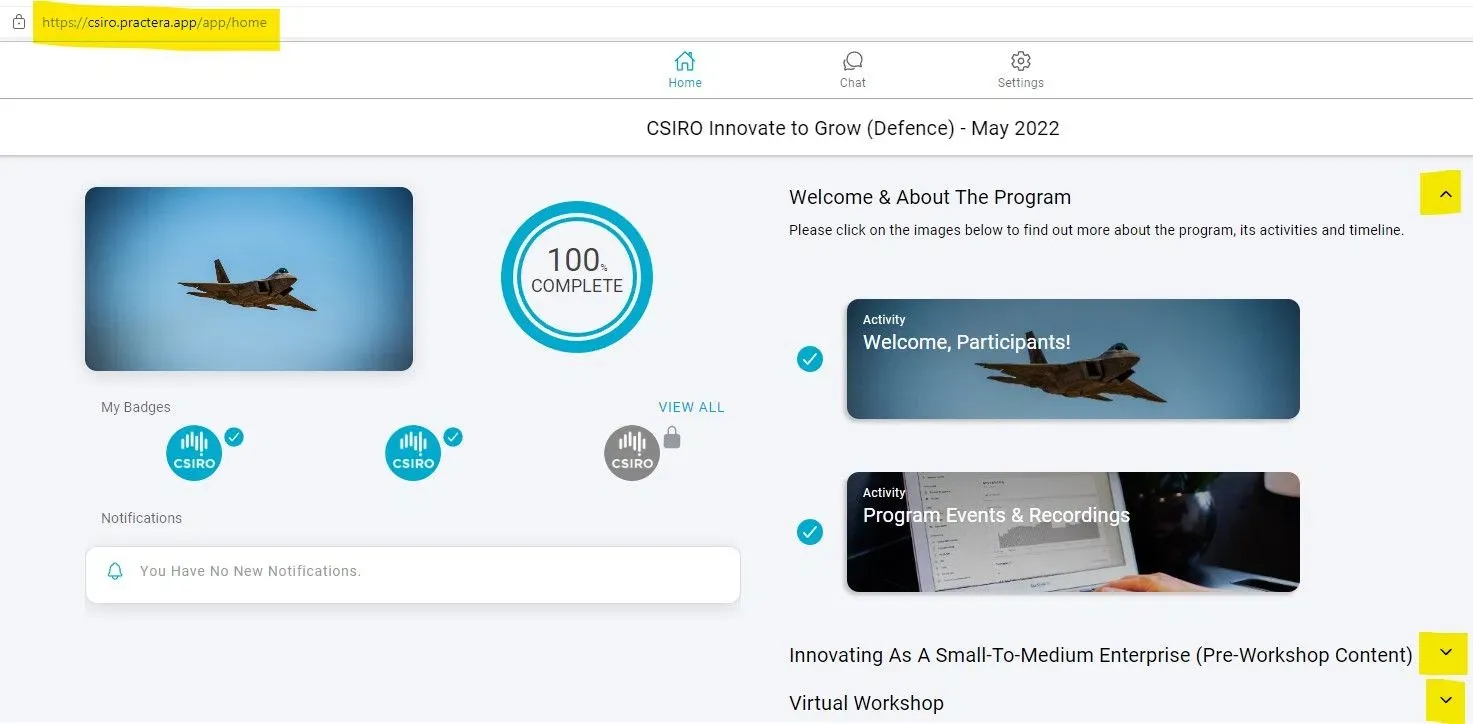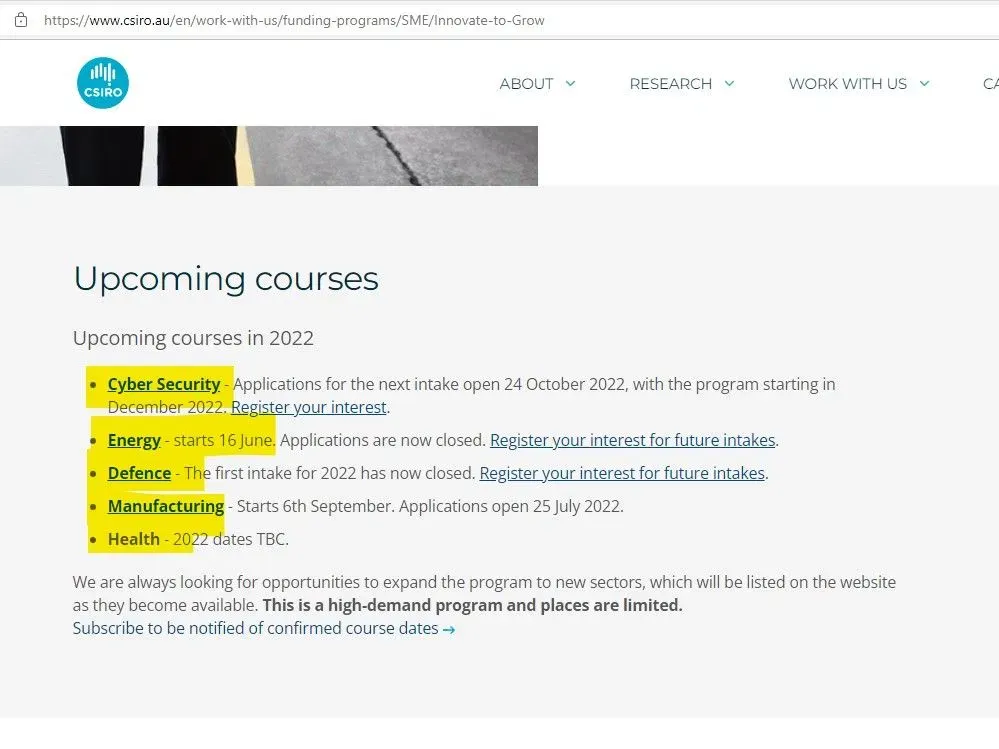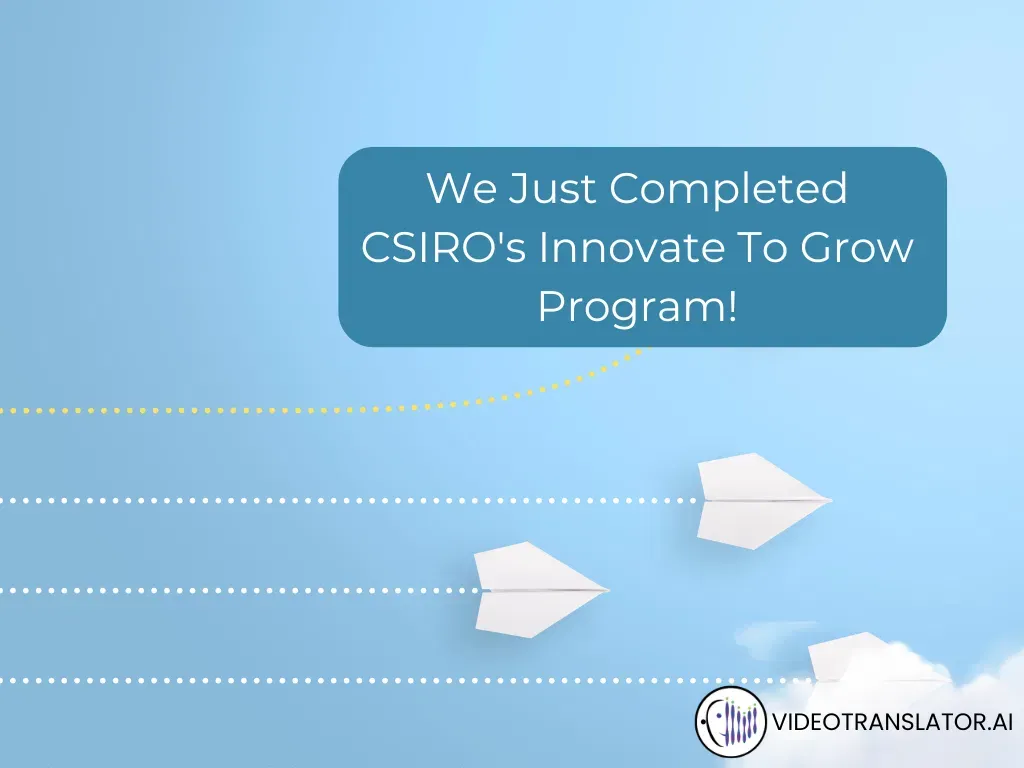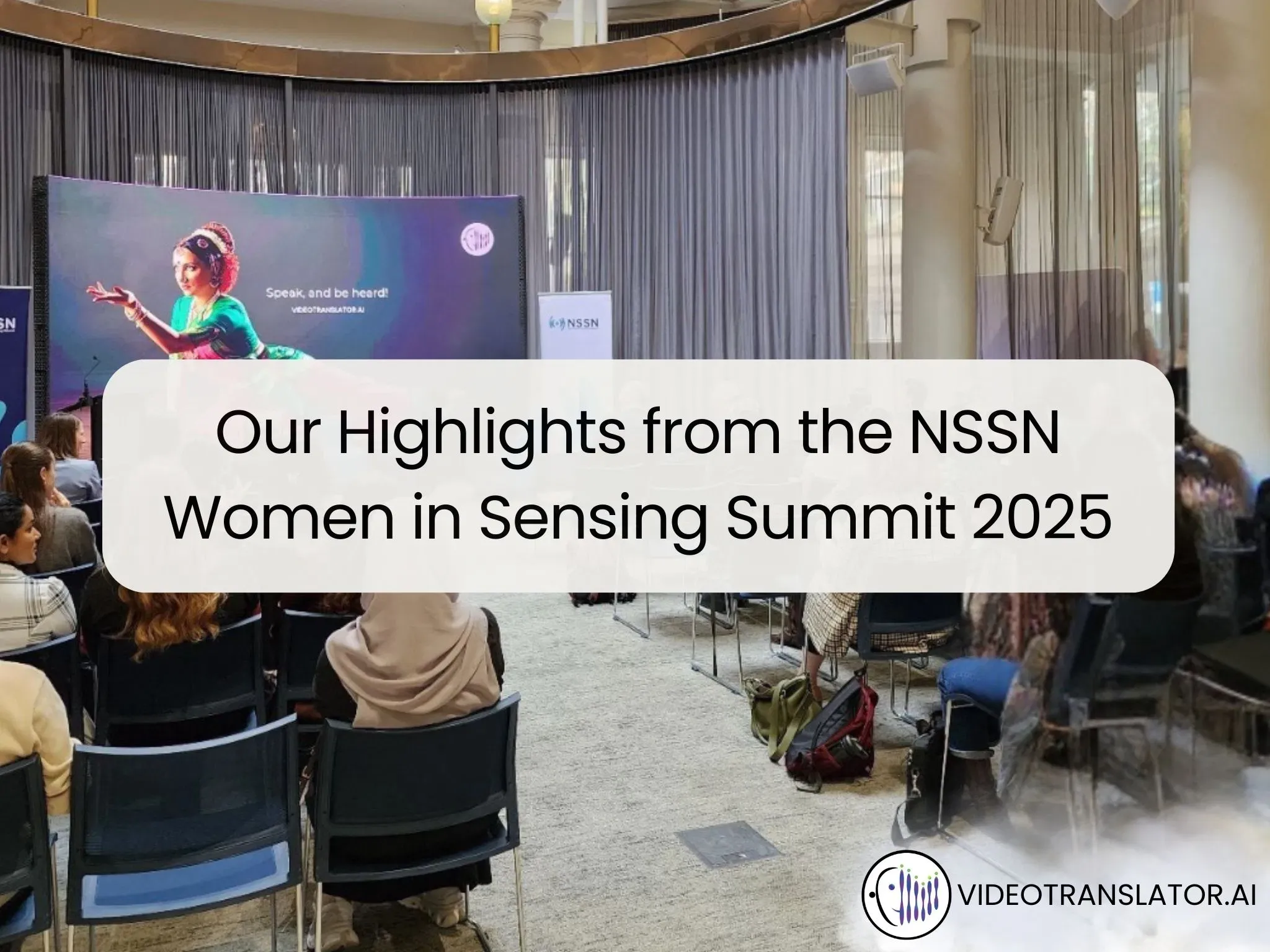Here at VideoTranslator, we have been busy. Busy doing what?
Well, between hustling, building our product, setting up processes, and building a business the hard way - we had an excellent idea.
Why don’t we speak to some people who have done the whole innovation to commercialization thing properly? Ideally, these folks have done it before too, and maybe even have a track record in turning innovation into commercial outcomes.
😃
Of course, we are talking (tongue in cheek) about the good people at CSIRO.
For our overseas visitors, CSIRO is the apex scientific research organisation in Australia. It has been working in various iterations since 1916, with the modern incarnation of CSIRO being set up in 1949.
So they have been doing this for a while. Maybe we can learn something from them?

This blog post is a very brief look at the program, and what VideoTranslator got out of it.
A couple of disclaimers:
- This was our experience, and might not be yours.
- The program changes, and we were in the Defence stream, which you may or may not be in.
- Talk to the folks at Innovate To Grow, this blog post is not meant to replace anything they say. It’s just a reflection of our experience (see top bullet!)
Was Innovate To Grow worth the time/energy/resources we put into it?
Yes.
Ok - the fine print, this program is well worth the time - we found it useful, but… doing some pre-work will greatly increase the good stuff you can get out of the program.
Here are some of the things we would have done differently, to get the most out of the program, if we were to do it again.
CSIRO Innovate To Grow
From the website, ‘Innovate to Grow is a free 10-week program coordinated by CSIRO for Small to Medium Enterprises (SMEs) who want to progress their R&D opportunities, or are in the early decision-making stages about engaging in R&D.’
This is very accurate. It’s what they are trying to actually make happen.
We went into the program via a somewhat circuitous route. Over conversations with other startups, we ended up talking to the folks at Capability Acquisition & Sustainment Group | About | Defence.
As we are not a defence contractor, this was all new to us at VideoTranslator. The folks at CASG - who probably realized working with Defence was new to us, (gently) suggested maybe we want to look into the Innovate To Grow program.
So we signed up, got accepted, and on the basis of a pretty good experience, decided to write a blog post about it!

How CSIRO’s Innovate To Grow Is Setup
This is basically an online delivered course. With the tools the team at Practera provide, this works really quite well.
What CSIRO is trying to do here:
- refine your innovation challenge question
- assess the viability of your innovation
- build your business case
- prepare a strong funding application
So the way to think about this is like so.
You want to have an end product in mind when you go into this program. It was not totally obvious to us, probably because we stumbled on the program in a somewhat circuitous manner.
Luckily, we had something in mind when we did apply, so it was not too bad.
However, go in with a clear idea of the final product you want to develop, and do work in that regard. So clearly:
- It’s a new product or an improvement on what you are already doing. With VideoTranslator we were looking at a different way to use our proprietary tech offering.
- Have a gap in mind. We fell down a little here because we had not done enough work on what we were thinking about. You should do more here.
- With the gap in your product roadmap, this is what the Innovate to Grow Program will address primarily.
- How to address the gap - the academic resources that CSIRO and other universities bring together - accessing this is the value add where Innovate To Grow excels.
How CSIRO’s Innovate To Grow Works?
The program is not too heavy, but like anything else, you get what you put into it.
The big plus for us was the team of experts they have put together across the entire commercialization lifecycle.
Again, the course itself is pretty good, and you do learn quite a bit, but the experts are where it is at.
Create an innovation challenge and collaborators
This forces you to think about the gap in your product roadmap - and turn it into a research question.
Why would you do this?
Because thinking the product gap in terms of an innovation challenge is very helpful to finding, engaging and getting delivery of a solution, from the correct grouping inside academia.
So (speaking as an industry) the product gap is the thing that is missing from our point of view.
From an academic’s point of view, the question is, (a) can I help fix it, (b) who is paying and how much in case we need additional resources, and © what happens to the IP?
The way it works for academia is to take industry engagements, they need funding to cover their costs and those of any associates they require - think grad students / PhD candidates etc.
On top of this, they have to ensure the university gets a top-up. The point of this is to pay for the consolidated resources of the university - labs, offices, research institutes etc. This makes sense as soon as you think about it, but it was new to us.
This might be totally obvious to you but wanted to put this out there because it was not obvious to us at the beginning.
Build A Business Impact Case
This section was pretty useful.
In essence, it is a normal DCF (Discounted Cash Flow) model you will be working with.
There are a number of changes specifically put in to illustrate how universities allocate resources.
Once you see it, it makes much more sense. The other major advantage here is that the models get improved over time, so ours included things like the R&D grant component - which is only relevant to Australian startups.
That being said, the fact we had not fully fleshed out our proposal came back to bite us a little bit here. If we had done more pre-work, we would probably have found this much more useful, including the bits about risk management.
Things you care about here:
- Refining the innovation statement, i.e. your research question.
- Work out better who you will talk to in terms of early customers.
- Scope out the research question, including removing bits that are not relevant.
- Look at what the action items (approach) and key deliverables could be for the project.
- Look at the time involved.
All of the above come together in the cash flow model, and the parts about how to include academic resources are very useful here.
You’ll also calculate costs, benefits, ROI, and payback timeframes here. If you have any finance skills, this is pretty straightforward - instead of modelling debt or equity, you model cash flow from grants and in-kind donations - easy peasy.
Build A Funding Strategy
Again, it would have been super helpful if our project was more fleshed out prior to this phase of Innovate To Grow.
In fairness, we have won the MVP grant and helped a client win the inaugural SBIR program, so the feeling was we would be fine.
Yeah…
Clearly, we should have done more here. But anyways, the skinny is this:
- Work out where you are going to fund the project from!
- See the above bullet. No - really.
Ok - it was not that bad. But the logical point from building a timeline and costing it out - the high-impact business case - is how do you then fund the project.
Because we have some experience with working with academia, we should be fine, but if you don’t - well worth doing some more work on this front.
Summary
If you have not worked with academia before, or have not worked with a range of academic resources before, you should probably put in for this course.
If you do:
- The team is super supportive. Shout out to Prof Tony Watson and Adrian Supetran for looking after us! We got extensions and feedback, and they did not give us too much grief when assignments were submitted late 😃 many thanks!
- The experts are where it is at. Sure, sometimes questions which we don’t care much about are boring, but you pick up lots of things. For instance, the R&D team at the ATO made an appearance, and it was very useful to hear from them about a program we have benefited from, but from the inside.
- Do the work. Yes - it is work, and there are homework assignments. Don’t worry too much about the quality, the best effort is fine and the team is helpful!
All things being equal, despite having some experience with the content, we would totally recommend you do the course if you are on your own startup journey!
And say hi to Tony and Adrian from Team VideoTranslator if you see them!



